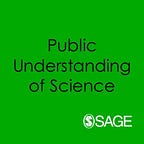Why We Teach Science (and Why We Should)
Review by Mairéad Hurley
A central question throughout this book is whether every student in our educational system needs to tread the same path in science learning.
Reading the preface of this book, a vivid image of John L. Rudolph sitting at a kitchen table with his teenage daughter comes to mind. He quizzes her on high school biology, she quizzes him on why she needs to know this stuff anyway. As a parent, he advocates for good grades and preparation for college-level science courses. As a scholar who has spent thirty years immersed in the history of science education, he cannot escape the tensions he feels between “why we say we teach science, what students learn, and what those learning outcomes actually do for us”. Rudolph explores thoroughly these questions and invites the reader to imagine what a very different kind of science education might entail.
The first part of this thought-provoking book introduces us to the various motivations and drivers of the policies that have dictated science education over the years. Rudolph distils “What we say” about why we need science education into four types of discourse.
One of these, science education for the utility of student and nation, including economic prosperity, national security and global competitiveness, he labels “technical training”. The other three are grouped into what the author calls “science for general education” — this includes science education for cultural appreciation; science education for better thinking and intellectual improvement, and science education for democratic decision-making. These discourses will all be familiar also to students and practitioners of science communication. They have mirrored the changing societal, cultural and economic trends of each era, occasionally merging or receding, but overall, forming the basis of “why society has invested so much time and energy into science education for all members of society”.
Entitled “What We Do”, the second part of the book contrasts the goals of science education with what is actually taught in a science classroom, through a curriculum that is focused on science content knowledge and disciplinary mastery. Rudolph suggests the science education we have defaults to the technical training goal: learning the language, facts and principles of science.
A central question throughout this book is whether every student in our educational system needs to tread the same path in science learning. The author estimates that the proportion of school leavers who follow a technical science education into science-related jobs is close to 7%. Hence, he asks us to consider: does a technically-focused science education serve the needs and interests of the remaining 93%? This section also takes a look into whether any of the hypotheses of the science education we have are actually holding true — does doing an approximation of authentic science in the classroom actually lead to better thinking in everyday situations? Rudolph suggests not.
The book concludes with the author’s vision of the future. In this vision, a thriving two-way relationship exists between science and society, underpinned by a science education that equips citizens with the capacities to contribute meaningfully to it. The primary objective of such a science education would be to build public trust in science.
Learning would cover epistemological context — how the world is known through science, and the societal context — how scientific work is supported and functions in today’s world. Rudolph is not calling for an unquestioning “belief” in science, but rather a critical appreciation of the culture and practices of science as a public enterprise.
As someone immersed in the education of future science teachers as well as in research in science education and science communication, I found this vision strongly appealing. In the closing chapter of this book, the author reflects on his aspirations for systemic change. One proposed adjustment that seems possible and desirable is in the way we prepare science teachers, with a suggestion for the inclusion of courses on the history, philosophy, and sociology of science, public engagement with science, and science communication as part of their journey toward certification.
The closing call is to build a science education based on evidence. This should be obvious — we are science educators after all, evidence is our game. But we humans don’t like sunk costs. People are often willing to go to extreme lengths to justify decisions they have already made, especially if they have publicly placed a stake in the ground with regard to some issue.
Given the decades and dollars poured into the science education we have, many science educators, administrators and parents might find Rudolph’s argument a hard pill to swallow. In light of the many obstacles in the path toward change outlined in the final chapter, this book may feel like a scream into a gale force wind.
As with Baram-Tsabari‘s 2020 review in this journal of Rudolph’s earlier work How We Teach Science: What’s Changed, and Why It Matters, those of us in other parts of the world may feel slighted by the author’s choice of “We” in the title as only referring to the United States. However, given the scope of the work and the data sources involved, it would be a challenge for any one author to do such a deep dive for more than one jurisdiction. Instead, this book offers a welcome opening for an important discussion for those involved to take up in their respective countries about why we do things the way we do, and I thank John L. Rudolph for his part in stimulating such a critical conversation.
Mairéad Hurley is Assistant Professor of Science Education at Trinity College Dublin, Ireland. She studies transdisciplinary science learning in formal and non-formal settings. Her recent publications include (with Joseph Roche) ‘ RISING Strong: Sustainability through Art, Science and Collective Community Action’, Sustainability, 15 (20), 2023
